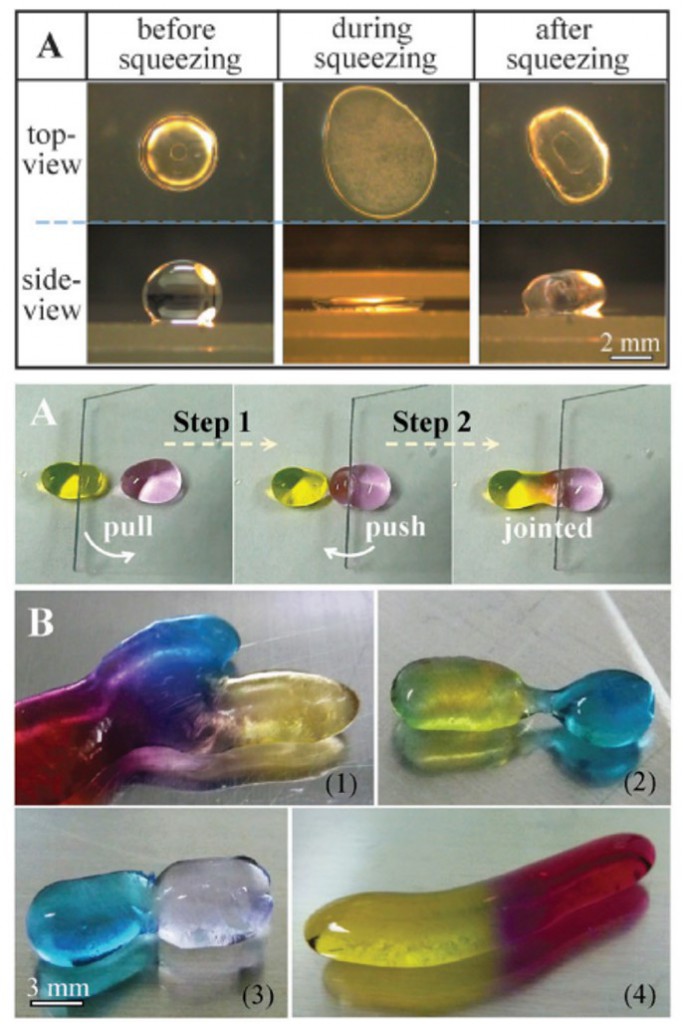Miniature reaction vessels, such as liquid marbles, have shown significant promise for millimeter scale and low volume chemical and biological experiments. Here, solid particles are trapped at the drop surface, separating the interior liquid from the surface, so the droplet does not stick to the substrate. For large scale applications, liquid marbles have some handicaps, including their lack of optical clarity and their restriction to only a spherical shape. In a recent full article in Soft Matter, a collaborative research team has recently discovered a liquid marble alternative, where nanoparticles are squeezed onto a drop surface to alter its shape while still maintaining optical transparency and reaction vessel properties.
To create the stable deformation of a liquid, a single water drop is placed between two glass surfaces. The two glass surfaces were coated with layers of hydrophobic silica nanoparticles. When the drop was squeezed between the two modified glass layers and then released, nanoparticles detached from the glass and became adhered at the water droplet surface. Once the squeezing force was released and as the droplet tried to recover to its original spherical shape, the new nanoparticle layers on the drop surface became “jammed”, and permanently deformed the water droplet shape. The final shape of the deformed droplet was determined by the squeezing force, but the shape of the droplet could be adjusted by injecting new water into the drop, breaking apart the surface nanoparticles.
Moving from single water drops to larger volumes and exploiting the jamming properties of the nanoparticles, liquid plasticines could be developed. The water was deformed into a variety of shapes and used as small reaction vessels. Multiple plasticines were joined for controlled chemical reactions and then quickly separated using a hydrophobic knife. As proof of concept, a liquid plasticine with gold nanoparticles was connected to DC power (30 V) allowing the gold nanoparticles to migrate to the positive end of the plasticine. The liquid was then cut to separate the gold particles from the rest of the liquid. The permanently deformed drops and liquid plasticines offer new alternatives for liquid lenses and small volume liquid reactors.
See the full Soft Matter article here:
Xiaoguang Li, Yahui Xue, Pengyu Lv, Hao Lin, Feng Du, Yueyun Hu, Jun Shen, and Huiling Duan
 Dr. Morgan M. Stanton is currently a postdoctoral researcher at the Max Planck Institute for Intelligent Systems in Stuttgart, Germany. She completed her Ph.D. in Chemistry from Worcester Polytechnic Institute in 2014. Read more about Morgan’s research publications here or you can follow her on Twitter @morg368.
Dr. Morgan M. Stanton is currently a postdoctoral researcher at the Max Planck Institute for Intelligent Systems in Stuttgart, Germany. She completed her Ph.D. in Chemistry from Worcester Polytechnic Institute in 2014. Read more about Morgan’s research publications here or you can follow her on Twitter @morg368.
Follow the latest Soft Matter publications and updates on Twitter @softmatter or on Facebook.











